OLED (Organic Light Emitting Diodes) is a flat light emitting technology, made by placing a series of organic thin films (usually carbon based) between two conductors. When an electrical current is applied, light is emitted. OLEDs are used to make displays and lighting panels. OLEDs today are widely used in TVs, smartphones, tablets, laptops and wearables.
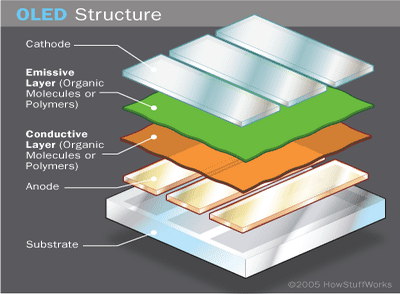
While OLED displays excel in color-contrast and efficiency compared to LCDs, they’ve also proven relatively hard to produce on a large scale. Current evaporation-based production techniques involve a lot of wasted material and risk of defects. OLEDs are also extremely sensitive to moisture and oxygen and therefore must be protected with a high performance encapsulating layer.
OLED ink-jet printing
Current OLED producing methods rely on evaporation processes, in which the organic materials are deposited onto a glass sheet through a thin metal stencil, also known as a "shadow mask. This process is problematic, as a significant amount of the material is wasted because it disperses all over the mask, in addition to inherent mask changes which expose the sheet to dust and compromise yields (OLEDs are by nature sensitive to contamination).
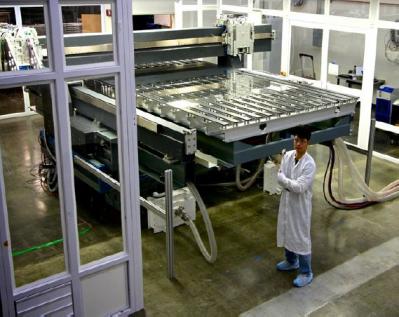
Inkjet OLED printing has the desirable ability to allow precision deposits without the use of a mask. It also produces less stray particles, thus boosting yields. These significant advantages make this technology interesting to many companies and virtually all OLED makers have active ink-jet printing development projects.
For many years, companies all over the world invested heavily in inkjet printing processes for OLED displays, but the process is not yet common, as printing OLED displays is a relatively challenging task, and soluble OLED materials are less effective than evaporable ones. Ink-Jet printing is also not able to reach the same high densities of evaporation OLED production, which limits its applications for large-area production (TV panels) and not small mobile, VR and wearable OLEDs.
Printed OLED panels on the market
One area in which inkjet printing is common in the OLED production process is the encapsulation layer deposition. Almost all OLEDs that adopt TFE encapsulation use inkjet printing to deposit the organic elements.
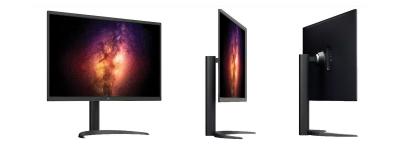
LG 32EP950 OLED monitor (31" 4K printed OLED panel by JOLED)
For actual OLED emitter layers deposition, currently the only company that commercially uses ink-jet printing is Japan's JOLED, who in 2021 started printing OLED display panels in its 5.5-Gen production line in Nomi, Ishikawa Prefecture, Japan.
The latest OLED ink jet news:
Kateeva did not yet receive any QD-OLED inkjet printers orders from SDC, and may lose its patent portfolio to its latest investor
In 2020 Kateeva lost Samsung's QD-OLED inkjet printing inkjet printing contact to Korea's Semes, which resulted in massive layoffs including some of Kateeva's executives.
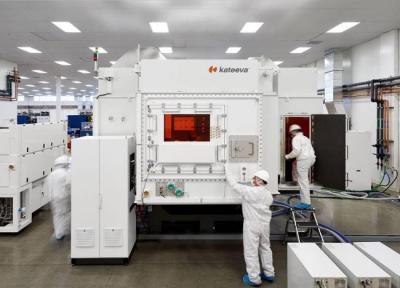
In January 2022 it was reported that Samsung has decided to change course, and rely on Kateeva's inkjet printers in its 2nd QD-OLED production line, as the Semes printers do not perform as well as Samsung hoped.
Notion Systems sells several n.jet EHD system
Notion Systems GmbH, a leading manufacturer of inkjet printing systems for functional materials, has received several orders for its newly developed n.jet EHD platform. The EHD (Electrohydrodynamic) technology is a promising technology to reduce structure sizes to less than one micron and enables the use of higher viscosity inks. It supports printing of small structures in microelectronics, semiconductor and next generation display manufacturing. Notion will ship the first four n.jet EHD systems to undisclosed customers in Europe in the third quarter of 2022.
The overall benefits of inkjet printing in the display industry are:
- Printing of smaller features sizes compared with conventional inkjet printing
- Elimination and replacement of various process steps
- Material savings, as printing is done digitally and without masks
- Replacement of expensive process steps
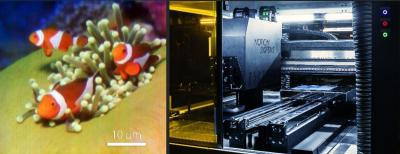
Several presentations and discussions with industry representatives during Display Week 2022 in San Jose USA revealed that inkjet printing technology for OLED/QLED displays will play an important role in future production. Since standard inkjet printing has a limitation at 400 dpi, EHD technology is the way to go. This was one of the main reasons why Notion entered into a cooperation with EHD printhead manufacturer Scrona in Switzerland last year, says Antonio Schmidt - SVP Sales & Marketing of Notions Systems
TADF developer Noctiluca IPOs at the Poland NewConnect stock exchange
Poland-based TADF developer Noctiluca went public at the Polish NewConnect stock exchange last week. The company now trades under the NCL ticker.
Noctiluca did not raise any funds in this IPO, as it has no need for more funds at this stage, but this move will enable some stock holders to realize their funds and other to join as stakeholders in the company.
OLED innovation in Poland - 2022 status and future plans
Poland is aiming to become a major innovation and high-tech hub, and the country is already enjoying a growing industry, focusing on IT, bio-technology, robotics and nanotechnology.
Poland has a strong material science and development expertise, and in recent years we have been seeing OLED and display-related ventures out of Poland. It seems Poland is poised to become an interesting location to watch for future innovation in the OLED industry.
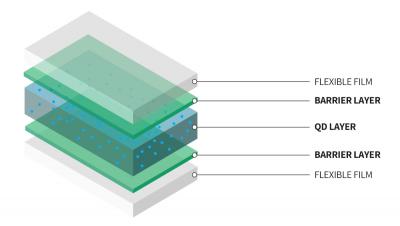
Ergis Group noDiffusion OLED encapsulation film
One such company is the Poland-based Ergis Group, a leader in plastic processing active in markets such as food packaging, industrial, automotive, medical and more. In 2020, Ergis launched its first product for the optoelectronic applications (such as the display market and photovoltaics) - the Ergis noDiffusion films for flexible OLED panels (both displays and lighting) and OPVs. Ergis is using a unique ALD-based technology that enables it to offer high performance films on low cost PET films.
Notion Systems installs an inkjet printing system at ITRI for OLED and QLED R&D
Notion Systems, a leading solution provider for industrial inkjet systems, announced that it had successfully installed an n.jet display system at Taiwan's Industrial Technology Research Institute (ITRI). The n.jet display system was developed in collaboration with MBRAUN/Germany and includes a fully integrated inert glove box solution that combines compact design with minimized nitrogen consumption.

ITRI is now using the new n.jet display system to research and develop novel OLED and QLED technologies. ITRI has developed many OLED technologies over the years, and it is now looking to replace vapor deposition and vacuum coating with inkjet printing which could reduce the number of steps, increase material utilization and increase display quality.
Will Samsung adopt Kateeva's inkjet printers in its next QD-OLED production line?
In 2020 Samsung decided to use inkjet printers made by Korea's Semes, in its QD-OLED production lines. This created a major problem for Kateeva which hoped to win that account, which resulted in massive layoffs including some of its executives. These inkjet printers are used to deposit the QD layer in Samsung's QD-OLED panels.

According to new reports from Korea, Samsung has decided to change course, and rely on Kateeva's inkjet printers in its 2nd QD-OLED production line (the SDC 98.5-Gen Q-2). The reports suggests that the Semes printers do not perform as well as Samsung hopes, and these also cost more than Kateeva's printers (but Semes is affiliated with Samsung, which helped it to get the orders).
Unijet supplies OLED microdisplay TFE inkjet deposition systems for Sidtek
According to reports from Korea, Unijet has supplied China-based Sidtek with inkjet printing systems, used for thin-film encapsulation (TFE) deposition of OLED microdisplays. This is Unijet's first sell of a commercial TFE printing system.
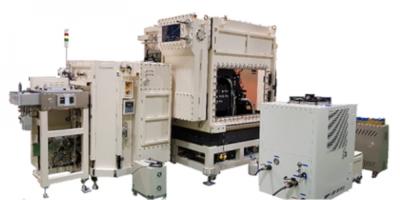
Sidtek, established in 2016, is now producing 0.39" XGA OLED microdisplays, which are available on the OLED marketplace. Sidtek's 0.39" display is available in a color version (1,000 nits) or a monochrome one.
TCL shows a 14-inch inkjet-printed rollable OLED display
Yesterday we reported that during its DTC 2021 conference, TCL demonstrated a 65" inkjet-printed 8K OLED panel co-developed by TCL's CSoT and JOLED. During the conference, the company also unveiled another panel a rollable OLED.
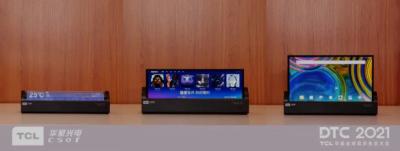
This is a 14" inkjet printed OLED panel, produced using an inkjet printing process.
TCL developed a 65" 8K inkjet printed OLED TV display, as it gets ready for mass production in 2023
According to a report from China, TCL demonstrated 65" 8K OLED panel, produced using an inkjet printing process. This display was co-developed by TCL's CSoT and JOLED.
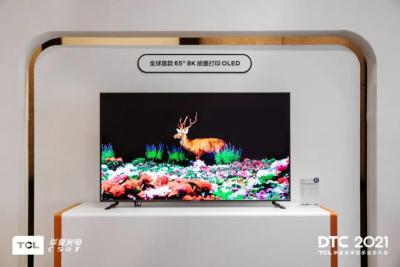
Last year it was reported that TCL's CSoT is building a $6.8 billion 8.5-Gen inkjet printing line in Guangzhou (the T8 line), with production expected to begin in 2023.
Interview with Dr. Michael Doran, CEO & Founder at Notion Systems
Notion Systems is a leading supplier of industrial ink jet printing systems. The n.jet inkjet platform from Notion Systems is used to produce printed circuit boards, OLED & QLED displays, sensors and high-quality 3D parts.
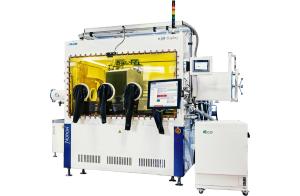
We present the following interview with the Company's CEO and founder, Dr. Michael Doran.
Q: Hello Michael. Can you detail notion systems' offering for the OLED industry? We understand you offer R&D and production systems, for both RBG printing and TFE printing.
Notion Systems offers a system platform called n.jet display series that prints functional layers at various steps of display production and for a range of display technologies. These include rigid, flexible, OLED, QLED and micro displays. The platform meets the most stringent requirements for process environment and process stability.
Pagination
- Previous page
- Page 3
- Next page



